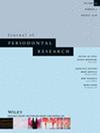To assess ultrasonographic tissue elasticity at teeth and implant sites and its variation after peri-implant soft tissue augmentation with a connective tissue graft (CTG).
Twenty-eight patients, each contributing with one clinically healthy dental implant exhibiting a soft tissue dehiscence (PSTD), were included. Implant sites were augmented with CTG and monitored over 12 months. Ultrasonographic strain elastography, expressed as strain ratios (SR1, SR2, and SR3, respectively) was assessed at baseline, 6-, and 12-month, and compared with the corresponding contralateral homologous natural tooth. SR1 assessed the strain/elasticity of the midfacial coronal portion of the soft tissue in comparison to the natural tooth crown/implant-supported crown, SR2 evaluated the strain of the midfacial coronal soft tissue in relation to the one of the alveolar mucosa, while SR3 depicted the strain of the midfacial soft tissue in relation to the interproximal soft tissue on the transverse ultrasound scan.
SR1 in natural dentition and at implant sites was 0.20 ± 0.08 and 0.30 ± 0.14, respectively (p = .002), indicating that the coronal portion of the soft tissue around teeth is generally more elastic than its counterpart around dental implants. Soft tissue augmentation with CTG promoted an increased stiffness of the midfacial coronal portion of the soft tissue over 12 months (p < .001 for SR1, SR2, and SR3). Strain ratios at the 12-month time points were significantly higher than the values observed at 6 months (p < .001). Regression analysis demonstrated that strain elastography ratios in natural dentition were significantly associated with keratinized gingiva width, and gingival thickness. At implant sites, SR1 was significantly associated with keratinized mucosa width and mucosal thickness (p < .001 for both correlations), SR2 was significantly associated with keratinized mucosa width (p = .013), and SR3 was significantly associated with the surgical technique performed in combination with CTG (p = .022).
Ultrasound strain elastography captures and quantifies tissue elasticity and its changes after soft tissue augmentation. A different baseline tissue elasticity was observed between teeth and dental implants in the most coronal aspect of the soft tissue. The main factors affecting tissue elasticity-related outcomes were the keratinized tissue width, and mucosal thickness.



